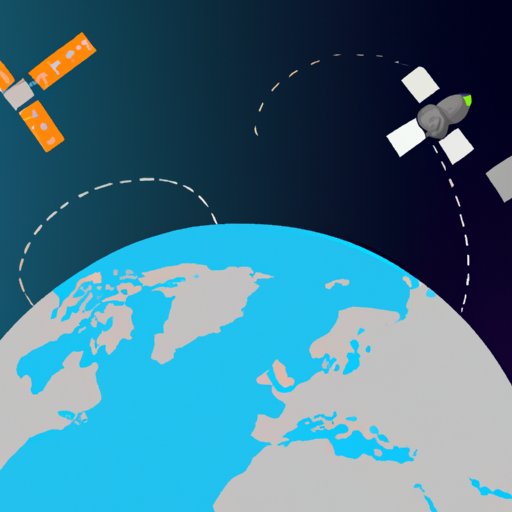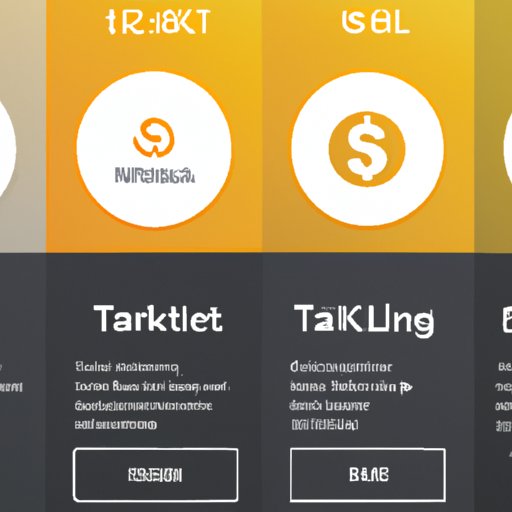Introduction
In recent years, satellite internet has become an increasingly popular option for those living in rural areas with limited access to traditional broadband services. One of the most talked-about providers is Starlink, a satellite internet service launched by SpaceX in 2020. But how much does Starlink cost? In this article, we’ll take a look at the pricing of satellite internet services, compare Starlink’s cost to other providers, analyze the pros and cons of the service, and investigate how Starlink is changing the cost of satellite internet.
Comparing Starlink’s Cost to Other Satellite Internet Services
Before we dive into the specifics of Starlink’s pricing, let’s take a look at the cost of satellite internet services in general. According to a 2017 survey conducted by the FCC, the average cost of satellite internet per month is $65.85, compared to just $52.90 for DSL and $48.70 for cable.
The price of satellite internet can vary depending on a number of factors, including the speed of the connection, data caps, and whether or not you need professional installation. It’s also important to keep in mind that many satellite internet providers offer discounts for customers who sign up for long-term contracts.
So how does Starlink stack up in terms of cost? Let’s take a look at some of the major satellite internet providers and how they compare to Starlink.
Factors That Impact Price
When comparing the cost of satellite internet services, it’s important to consider the various factors that can affect the price. These include the speed of the connection, data caps, and whether or not you need professional installation. Additionally, many satellite internet providers offer discounts for customers who sign up for long-term contracts.
Overview of Prices for Different Services
Viasat, one of the most popular satellite internet providers, offers plans starting at $50 per month for 12 Mbps download speeds and 30 GB of data. Its highest-tier plan offers 100 Mbps download speeds and 150 GB of data for $150 per month. HughesNet, another major provider, offers plans starting at $59.99 per month for 25 Mbps download speeds and 10 GB of data. Its highest-tier plan offers 50 Mbps download speeds and 50 GB of data for $149.99 per month.
How Starlink Stacks Up
Starlink’s current pricing structure is $99 per month for 50 Mbps download speeds and no data caps. This is significantly less expensive than Viasat and HughesNet’s higher-tier plans, although it should be noted that Starlink’s speeds are not yet as fast as those offered by its competitors. However, Starlink is offering discounts for customers who sign up for long-term contracts.

Analyzing the Pros and Cons of Starlink in Relation to Cost
When considering the cost of Starlink, it’s important to weigh the advantages and disadvantages of the service. On the plus side, Starlink is much less expensive than other satellite internet providers. Additionally, there are no data caps, which can be a major advantage for those who use a lot of data. On the downside, Starlink’s speeds are not yet as fast as those offered by its competitors.

Exploring the Different Packages Available from Starlink and Their Costs
Starlink currently offers three different packages: Starter ($99/month), Standard ($199/month), and Pro ($299/month). Each package offers the same 50 Mbps download speeds, but the Pro package includes additional features such as unlimited data, priority support, and advanced network monitoring.
Breakdown of Costs
In addition to the monthly subscription fee, Starlink also charges a one-time setup fee of $499. This fee covers the cost of the equipment and installation, as well as any additional taxes or fees that may be applicable. Customers also have the option to purchase additional equipment, such as an antenna and router, for an additional cost.
Examining the Financial Benefits of Investing in Starlink
In addition to the cost savings associated with Starlink’s lower monthly subscription fees, there are also some potential long-term financial benefits associated with the service. For starters, Starlink’s no-data-cap policy could lead to significant savings over time, as customers won’t have to pay extra for exceeding their data limits. Additionally, Starlink’s low latency could lead to improved productivity and efficiency, resulting in increased profits for businesses that use the service.

Investigating How Starlink is Changing the Cost of Satellite Internet
Starlink’s entry into the satellite internet market has had a significant impact on the cost of satellite internet services. According to a recent survey by the FCC, the average cost of satellite internet has dropped by 5.6% since Starlink’s launch. This decrease in cost is likely due to increased competition in the market, as more consumers are now able to choose from a wider range of providers.
The decrease in cost has also been beneficial for consumers, as it has made satellite internet more affordable for those living in rural areas with limited access to traditional broadband services. Additionally, the lower prices have made satellite internet a more viable option for businesses, as they can now take advantage of the service’s low latency without having to pay exorbitant prices.
Conclusion
Starlink is revolutionizing the cost of satellite internet services, offering competitive prices and no data caps. While its speeds are not yet as fast as those offered by its competitors, Starlink is still a great option for those looking for an affordable and reliable satellite internet service. Additionally, the long-term financial benefits associated with Starlink make it a smart investment for businesses and individuals alike.
In conclusion, Starlink is a great option for those looking for an affordable and reliable satellite internet service. Its competitive pricing and no-data-cap policy make it an attractive option for those living in rural areas with limited access to traditional broadband services. Additionally, the long-term financial benefits associated with Starlink make it a wise investment for businesses and individuals alike.
(Note: Is this article not meeting your expectations? Do you have knowledge or insights to share? Unlock new opportunities and expand your reach by joining our authors team. Click Registration to join us and share your expertise with our readers.)
